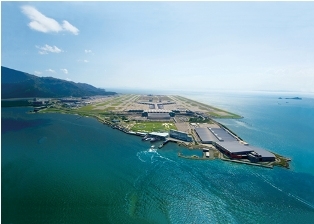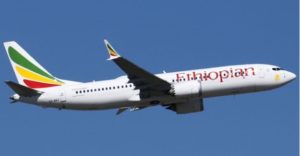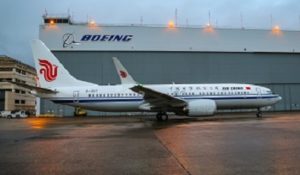Agoda.com customer survey reveals Asia’s best airports

Agoda.com, Asia’s leading hotel booking site and part of Nasdaq-listed Priceline Group (Nasdaq:PCLN), has released a list of Asia’s best airports as ranked by customers who flew into capital cities.
Airports are fascinating structures, and require a level of planning and design not unlike a small city. In this regard, a customer’s perception of whether an airport is “good” or not depends on many factors: signage, food selection, facilities for the disabled, ease of movement, rest options and even how many bathrooms there are.
Failure to plan correctly can result in expensive delays, such as when Heathrow Airport’s new Terminal 5 opened in 2008 and had to content with dozens of cancelled flights and thousands of stranded passengers on its first day. Similarly, Denver Airport’s cutting-edge baggage system turned out to be a failure, costing the airport USD $1 million per month in maintenance costs until it was ultimately abandoned. When it comes to airports, details matter.
For the survey, Agoda chose 15 major Asian capitals: Bangkok, Beijing, Ho Chi Minh City, Hong Kong, Jakarta, Kuala Lumpur, Manila, New Delhi, Phnom Penh, Seoul, Singapore, Taipei, Tokyo, Vientiane and Yangon. Travelers to these airports were asked to give it an overall rating on a scale of 1 (poor) to 5 (excellent). The survey was based on over 11,000 respondents.
Unsurprisingly, Singapore’s Changi Airport came in first, with an overall rating of 4.37. Known for its hyper-efficiency and consistent investments in improvement and upgrade, it features in the top 3 of nearly every airport ranking list in the world. In 2012 Changi handled 51 million passengers. Airport Fact: For every $10 you spend in the airport you can claim a ride on the four-story indoor slide. It won’t speed up your plane, but it makes waiting a bit less boring.
Second spot with a rating of 4.13 was Hong Kong International Airport which, similarly to Changi, usually places very high on any ranking list due to its convenient transit links and high-tech design on a huge chunk of reclaimed land in the South China Sea. In 2012 Hong Kong Airport handled 56 million passengers. Airport Fact: The airport employs over 65,000 people!
Rounding out the top three is Seoul’s Incheon International Airport with a score of 4.01, which handled 39 million passengers in 2012. Interestingly, the airport holds a record that is now unbreakable – it was named the Best Airport Worldwide by the Airports Council International for a record 7 years (2005-2011), and the award was discontinued after their final win. Airport Fact: Long layover? No problem! Incheon includes a golf driving range, putting course, and even an ice skating rink with artificial ice!
Following this – just barely – was Delhi’s Indira Gandhi International Airport with a score of 4.00. In a country of 1.2 billion people, it handled 34 million passengers in 2012, and has won several awards over the past few years for its rapid improvement. Plans are in place to allow it to handle 100 million passengers per year by 2030, quite a lofty goal. Airport Fact: If you’re tired, hit the “Nap&Massage” Lounge, which has 14 mini-rooms, each with shower&bathroom.
In fifth spot is Bangkok’s Suvarnabhumi Airport, which handled 48 million passengers in 2012 after opening in 2006 (although plans for an airport in its location go back to the 1960’s). As one of the most centrally-located airports in Asia, it’s a major transit and cargo hub and, interestingly, has the tallest control tower of any airport in the world. Airport Fact: The airport’s name (pronounced soo-wanna-boom) means Golden Land, but the area it’s built on was once called Cobra Swamp.
At number 6 is Tokyo’s Narita International Airport, which handles the majority of international traffic in and out of Tokyo – a total of 33 million passengers in 2012, and is a model of efficient design and management. Airport Fact: Narita was built on land reclaimed from a large residential area, an act which triggered violent protests when the plan went into effect in the late 1960’s.
Seventh place is Kuala Lumpur International Airport, which handled 40 million passengers in 2012. Noted for its distance from the city it serves – 60 kilometers – it is also one of the largest airports in terms of area used, which encompasses largely agricultural land across 25,000 acres. Airport Fact: It’s the first airport in the region to be certified by EarthCheck, a global environmental organization that rewards sustainable environmental management practices.
Coming up next is Beijing Capital Airport, which handled a staggering 82 million passengers in 2012, second only to Hartsfield-Jackson airport in Atlanta, Georgia. In 2004, the airport began construction on the gargantuan Terminal 3 to prepare for the 2008 Olympic Games. Airport Fact: Terminal 3 is the fifth largest building in the world in terms of floor area – 1.3 million square miles!
Ninth spot is filled by Taipei’s Taoyuan International Airport, which handled 28 million passengers in 2012. First opened in 1979 with a single terminal, it opened a second terminal in 2000 and a third is planned to be finished by 2018, which will be able to handle 43 million passengers. Airport Fact: In 2012, the airport handled over 1.5 million tons of freight!
And finally, rounding out our list is Phnom Penh International Airport in Cambodia, by far the smallest airport on the list with only 2 million passengers in 2012. Despite its tiny size – or perhaps because of it – Agoda.com customers thought it was one of the nicest airports in Asia. Airport Fact: Despite being about 160km from the ocean, the airport has an elevation of only 40ft above sea level!
Here, below, are the top ten airports and their rankings. For the list of all 15 airports in the survey, please see the Agoda.com news archive.
Airport Rankings in Asia’s Capital Cities
Rank Airport Name – Avg. Customer Rating
1 Changi International Airport – 4.37
2 Hong Kong International Airport – 4.13
3 Seoul Incheon International Airport – 4.01
4 Indira Gandhi International Airport – 4.00
5 Suvarnabhumi International Airport – 3.79
6 Narita International Airport – 3.69
7 Kuala Lumpur International Airport – 3.56
8 Beijing Capital International Airport – 3.48
9 Taiwan Taoyuan International Airport – 3.38
10 Phnom Penh International Airport – 3.14
agoda.com














